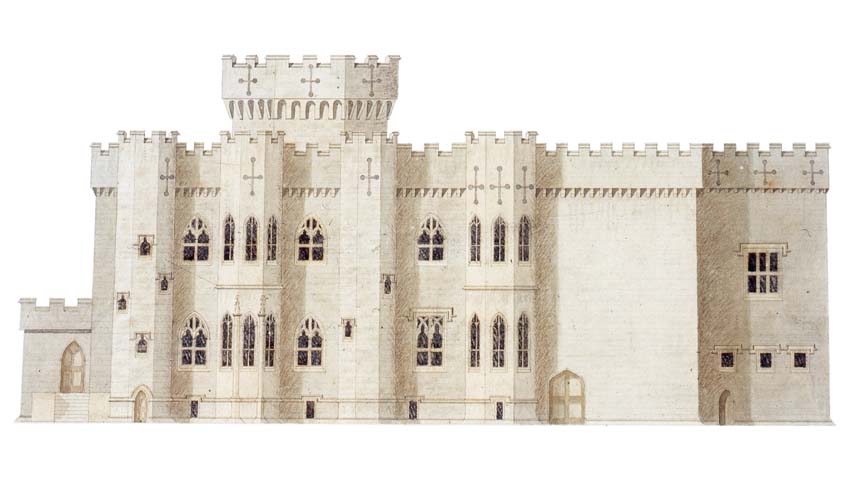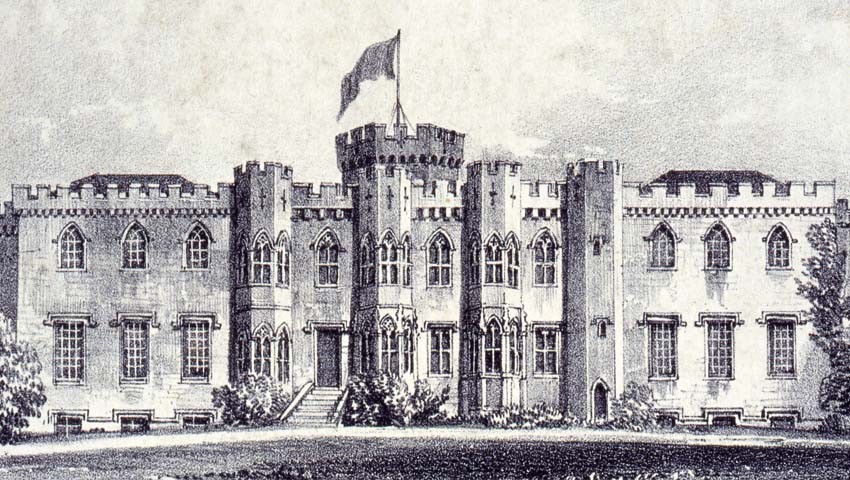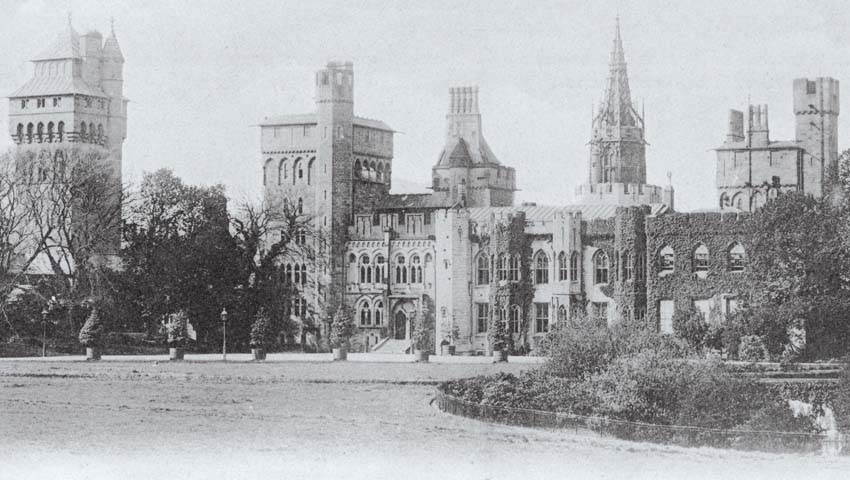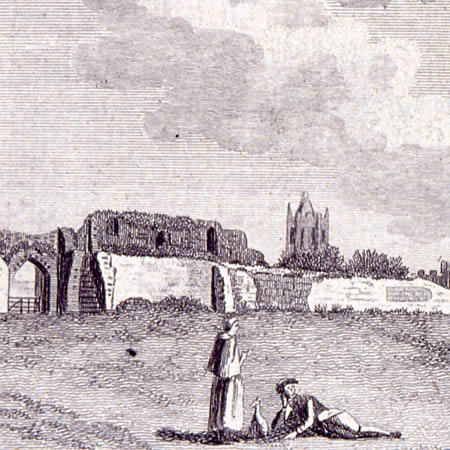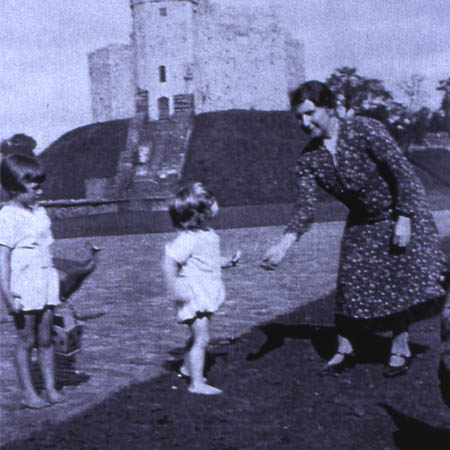What are you looking for?
13. The House
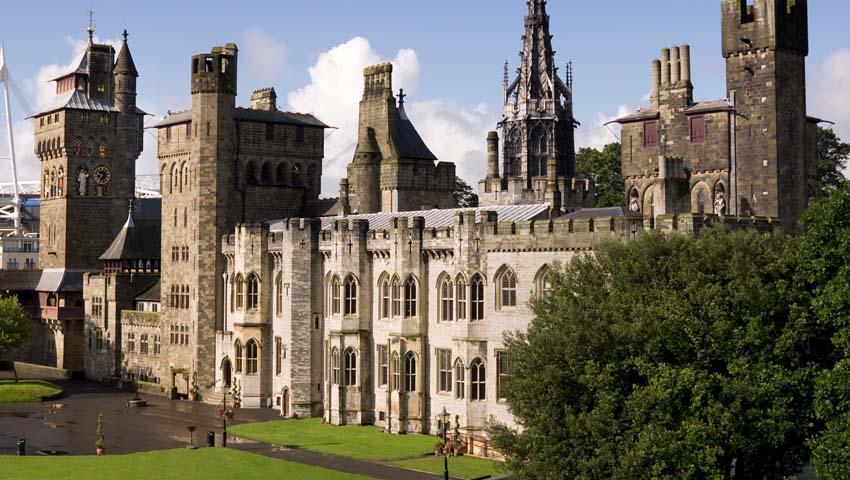
The images on this page show how the house developed between the 15th and the 20th centuries – under the ownership of some of the most powerful families in Britain.
In the gallery below, you can see what the house looked like in 1600, soon after it had been enlarged by the Earls of Pembroke. They were given possession of the Castle in 1551.
In the hands of the Earls of Pembroke, Cardiff Castle became a luxurious home – furnished with tapestries and other expensive textiles. Elaborate private gardens were also laid out at the side of the house.
But, by the time the Bute family inherited the Castle, in 1766, the house had fallen into disrepair. Lord Bute decided on an ambitious programme of demolition and rebuilding. The image in the centre of the panel shows the ‘gothick’ style wings, added by the architect Henry Holland. Along with his father-in-law, the famous Capability Brown, Holland transformed Cardiff Castle once again into a fashionable, modern residence.
If you now look at the final image, you can see how these earlier buildings were incorporated into the spectacular house you see today. This final transformation took place during the Victorian period. It was carried out by the architect William Burges, for the 3rd Marquess of Bute.
Their remarkable collaboration began in 1865, when Bute was only 18. Matthew Williams, former curator of the Castle said:
“He was going to restore the house to what it had once been, as he thought. Make it a comfortable house. So he incorporated the medieval remains and created a house that had electric light, central heating, all the comforts of home, but still making it look like a medieval dream palace.”
Stone from Bute’s own local quarries was used to build what has been described as ‘a dream castle implanted in a city’, and, ‘a gothic feudal extravaganza’. Its dramatic silhouette altered the Cardiff skyline forever.


